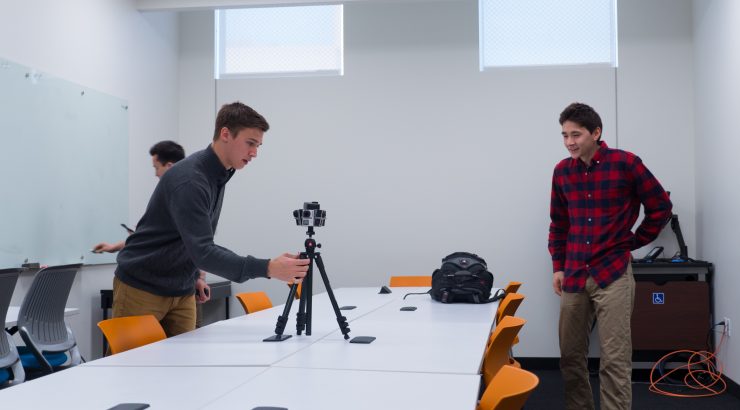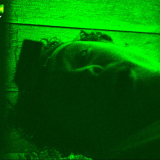360 Video is a Big Deal at Dodge College
April 29, 2016
The digital landscape is ever-changing, and as new technologies emerge, so do new ways to view them. One of the most popular these days is 360 video, an immersive platform that is a stepping stone to true virtual reality content. 360 video allows the viewer to control where to look in an environment using a browser or a smart phone, or simple add-ons like Google Cardboard and a pair of headphones. In fact, films such as
Star Wars
and
Insidious
are using 360 video as a way to promote themselves by getting viewers into the action in their worlds.
However, 360 video isn’t just meant for Hollywood. Four enterprising Dodge College students have embraced it and created a business to provide digital content that provides immersive promotional videos to universities such as Chapman.
Sho Schrock (BFA/Creative Producing ’19) is one of the minds behind VEGO. Schrock and friends all had an interest in virtual reality. Sam Wickert (BFA/Digital Arts ’19) was the only one that had some experience in that area, having worked with 360 video before on his YouTube Channel, So Krispy Media. Along with Daniel Price (BA/Screenwriting ’19) and Shiv Rajagopal (BA/Film Studies ’19), they came up with the idea that it could be used for non-narrative content, and decided to go into business together.

PHOTO: Jake Dugger
Shooting 360 video is no easy task; the team uses a custom rig that houses six 4K GoPros operating simultaneously. The synced footage is then stitched together to create an equirectangular image (a flat image) which can be viewed in 360° with a video player that supports it. The rig itself was designed and 3D printed by the team, using inspiration from existing models, and modified to suit their needs.
“The benefit of using 3D printed rigs over purchasing commercial rigs is that if the rig is not working out, we can always go back and modify it,” says Schrock. “We are currently using our second rig model, and are working on designing our third.”
Since 360 video is still a new platform, the team had to create rules for themselves.
“We have to be aware of framing, height, location, and subject distance from the camera in order to ensure that the video stitches correctly,” says Schrock. “We have to make sure there is enough motion and that it’s in the right places to motivate the viewer to look around.”

PHOTO: Jake Dugger
The VEGO team has already created a 360 video of the Digital Media Arts Center, which can be viewed on the Dodge College YouTube channel, giving prospective students who can’t make the trip to Chapman a unique look at what Dodge College has to offer.
“As content creators, narrative 360 video is very new and exciting. We would love to see what new forms of entertainment can come from it,” Schrock says. “As a company, however, we believe that 360 video can be used to showcase a wide variety of subjects including campus tours, real estate, and businesses, in a new light.”
While Schrock and his team don’t expect 360 video to replace traditional film or television any time soon, they do believe we will be seeing more of it in the future.
“It seems to act as a gateway to virtual reality for the general content consumer,” he says. “Major studios are already producing content for VR and companies such as Facebook, Samsung, and Apple have already invested in the technology. It is likely that we’ll be seeing more high budget stand-alone content soon”
Learn more about VEGO and their 360 video services at
http://vego360.com
.
Here is one of the fantastic 360 videos VEGO shot of the Digital Media Arts Center.
You can view the rest of the 360 DMAC videos by
visiting our YouTube playlist
.


